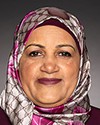Elder abuse is an issue of gender. There's no question about it. When we look at the proportion of people who are subject to elder abuse, it's approximately two-thirds women. Similarly, the portrait of an abuser about three-quarters of the time tends to be a man, with the exception of financial abuse, which actually has a lower rate. I'm taking frauds and scams out of that conversation. I'm talking about relational elder abuse, where there is usually an expectation of trust within a relationship. Frauds and scams are to the side. We don't necessarily have demographic data on that.
I would draw your attention to the 2015 elder mistreatment study that was run chiefly by Dr. Lynn McDonald at the University of Toronto. I was part of that study as well. It looked at the experiences across the country of elder abuse on a gendered basis. That information is also available on a province and territorial basis. I would be happy to share that information with the committee, if you'd like. Overwhelmingly, when we hear qualitative research on the experiences of older women, we see the intersectional piece being so critically important in terms of their social vulnerability.
I want to speak a little bit to the piece on newcomers and sponsored immigrants, who are perhaps some of the most vulnerable in terms of the requirements for family members to take, quote, “full responsibility financially” for the older adults who may have been brought in. That sets up a dynamic of deep concern about abuse and neglect that has a gendered element to it, particularly when we see financial resources being taken away, or, alternatively, simply not being made available to them. In some cases, women will come with their jewellery and some of their portable assets, which get taken into the family and the women then won't have. There is a significant concern around dependence and social vulnerability for older women who are experiencing intersectional marginalization due to sponsorship or immigration.




